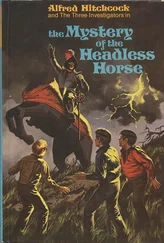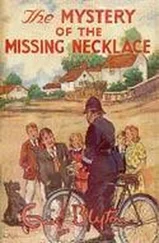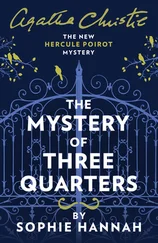But for that we need a yet broader, more Olympian perspective still, to take the full measure of the scope (and limits) of scientific knowledge as so recently revealed, and of how, paradoxically, those ‘disappointing’ outcomes turn out to reveal profound truths about the nature of genetic inheritance and the human mind, so long concealed from view.
There is no better way to start than through that most fruitful insight into the nature of things that comes with the experience of ‘wonder’, whose dual meaning those Cromagnons would instinctively have appreciated. They would have ‘wondered at ’ the pervasive beauty and integrity of the natural world, inferring there was a greater significance to their existence than they could know. They would have responded, too, to the human imperative to ‘wonder why ’, seeking out in the regularity of the movement of the stars and the diversity of form of living things those causes, patterns and explanations of the natural world that are ‘the beginning of all knowledge’.
3 The Limits of Science 1:The Quixotic Universe
‘The world will never starve for want of wonders, but only for want of wonder.’
G.K. Chesterton
The world is so full of wonder, it is a wonder we do not see it to be more so. Every dawn the ‘undeviating and punctual’ sun rises on the horizon to flood our lives with the light and warmth that drive the great cycle of organic life – thirty million times more natural energy in a single second than that generated by manmade power stations in a whole year. And punctually at dusk, its setting brings the day to a close with a triumphant explosion of purple, red and orange streaked across the sky. ‘Of all the gifts bestowed upon us,’ wrote the Victorian art critic John Ruskin, ‘colour is the holiest, the most divine, the most solemn.’ Those limitless nuances of colour and light that suffuse our daily lives mark too the procession of the seasons, a constant reminder of the profound mystery of self-renewing life.
And there is nothing so full of wonder as life itself, the more so now we know that the vital actions of even the humblest bacterium, smaller by far than the full stop at the end of this sentence, involve the concerted action of thousands of separate chemical reactions, by which it transforms the nutrients absorbed from soil and water into the energy and raw materials with which it grows and reproduces itself. But life there is, and marching down through the ages in such an abundance of diversity of shape, form, attributes and propensities as to encompass the full range and more of what might be possible. And what variety! ‘No one can say just how many speciesthere are in these greenhouse-humid jungles,’ writes naturalist and broadcaster David Attenborough of the forests of South America.
There are over forty different species of parrot, over seventy different [species of] monkeys, three hundred [species of] humming birds and tens of thousands of [species of] butterflies. If you are not careful, you can even be bitten by a hundred different kinds of mosquito … Spend a day in the forest, turning over logs, looking beneath bark, sifting through the moist litter of leaves and you will collect hundreds of different kinds of small creatures: moths, caterpillars, spiders, long-nosed bugs, luminous beetles, harmless butterflies disguised as wasps, wasps shaped like ants, sticks that walk, leaves that open wings and fly … One of these creatures at least will almost certainly be undescribed by science.
And the millions of species with which we share the planet themselves represent a mere 1 per cent of those that have ever been, each form of life the opportunity for a further myriad of subtly different variations on a theme. Why should the extraordinary faces of the bat family, whose near-blindness should make them indifferent to physical appearances, nonetheless exhaust the possibilities of the design in the detailed geometry of their faces? Why should the many thousands of species of birds yet be so readily distinguishable one from the other by their pattern of flight or the shape of their wing, the colour of their plumage or the notes of their song?
But birds, as the American naturalist Frank Chapman once observed, are ‘nature’s highest expression of beauty, joy and truth’, whose annual migration exemplifies that further recurring mystery of the biological world, those idiosyncrasies of habits and behaviour that defy all reason – like the Arctic tern, that every year traverses the globe, setting out from its nesting grounds in northern Canada and Siberia, winging its way down the coasts of Europe and Africa to the shores of the Antarctic, only to turn round and return northwards again: a round journey of twenty-five thousand miles that takes them eight months, flying twenty-four hours a day. How swiftly they fly, how confidently across the pathless sea at night!
And while we might rightly wonder how the Arctic tern knows how to navigate by the stars, it seems almost more wonderful still that the salmon should find its way from the depths of the ocean back to the same small stream from whence it set out, detecting through its highly developed sense of smell the waters of its spawning ground; or that the common European eel should cross the Atlantic twice, first from its breeding grounds off the North American coast to the rivers of Europe – and then back again. ‘The number of [such] admirable, more or less inexplicable traits that one might cite is limited not by the inventiveness of nature,’ writes biologist Robert Wesson, ‘but rather by the ability of scientists to describe them.’ There are, he points out, an estimated twenty thousand species of ant, of which only eight thousand have been described. So far biologists have got round to studying just one hundred of them in depth, each of which has its own unique, bizarre pattern of behaviour – such as ‘the female of a parasitic ant which on finding a colony of its host, seizes a worker, rubs it with brushes on her legs to transfer its scent making her acceptable to enter the host colony’. How did there come to be such sophisticated and purposive patterns of behaviour in such minute creatures?
And yet that near-infinite diversity of life is permeated by an underlying unity, where everything connects in the same web of self-renewing life. The rain falling on the mountains feeds the springs that fill the streams. Those streams become rivers and flow to the sea, the mists rise from the deep and clouds are formed, which break again as rain on the mountainside. The plants on that mountainside capture the rainwater and, warmed by the energy of the sun, transform the nutrients of the soil, by some extraordinary alchemy, into themselves. A grazing animal eats that same plant to set up another complex web of connections, for it in turn is eaten by another, and its remains will return to the earth, where the microbes in the soil cannibalise its bones, turning them back into their constituent chemicals. And so the process of reincarnation continues. Nothing is lost, but nothing stays the same.
Wheels within wheels; and across that vast landscape of living things, from the highest to the lowest, the survival and prosperity of man is yet, as J. Arthur Thomson, Professor of Natural History at Aberdeen University reminds us, completely dependent on the labours of the humble earthworm, without whose exertions in aerating the dense, inhospitable soil there could never have been a single field of corn.
When we pause to think of the part earthwormshave played in the history of the earth, they are clearly the most useful of animals. By their burrowing, they loosen the earth, making way for the plant rootlets and the raindrops; by bruising the soil in their gizzards they reduce the mineral particles to more useful forms; they were ploughers before the plough. Five hundred thousand to an acre passing ten tons of soil every year through their bodies.
Читать дальше












